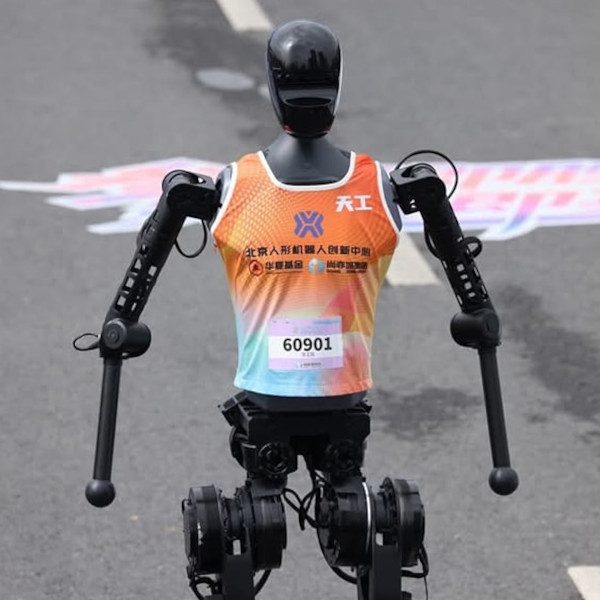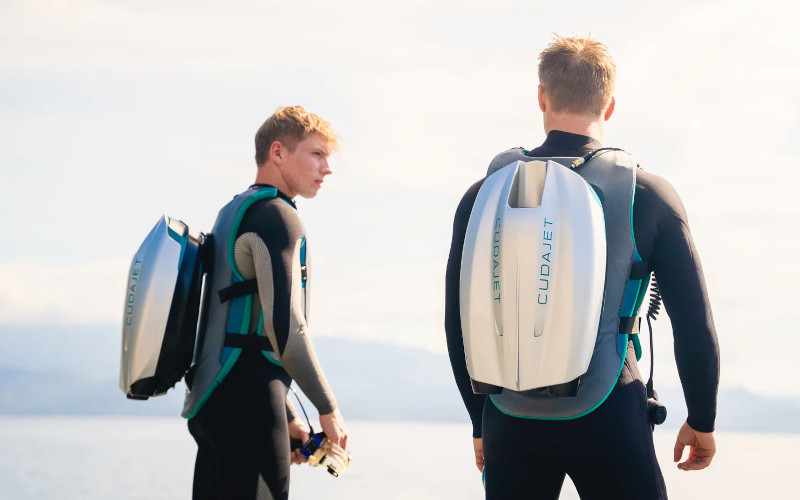
The concept of jetpacks has long had us daydreaming of flying around and floating in the air. Now, a company called CudaJet has taken these visions and placed them elsewhere—in the ocean. The UK-based company has created what they claim to be the world's first underwater jetpack.
Invented by Archie O'Brien and produced in England, the CudaJet offers speeds of up to 10 feet per second—faster than any swimmer out there—and provides about 90 minutes of untethered, self-powered underwater adventures. Boasting a patented propulsion system, the jetpack is operated by a handheld controller, with the user's body providing the direction while the device provides thrust. The CudaJet has a “quick attach” harness technology that fits most sizes and can be put on and set in a matter of seconds.
It's also compact like a backpack, fostering agility and even allowing users to do barrel rolls in the ocean. Its carbon fiber skeleton keeps it lightweight while providing the perfect balance between sturdy and flexible. As for the harness, it is made of high quality, sustainable neoprene. But, to keep yourself safe, you must wear a diving mask that covers your nose to prevent sinus injury, and you must safely equalize your ears—this means leveling the air pressure between your middle ear and the surrounding environment, which can be done in several ways including swallowing and yawning.
The jetpack has been tested at depths of up to 131 feet; however, out of safety, the CudaJet has a 3-meter (10-foot) limit to prevent inexperienced users from going too deep, too quickly. If this happens, the power will cut out, with the buoyancy of the jetpack bringing the user to the surface. This also happens if the motor dies down, although the system emits plenty of warnings if the battery is running low. The CudaJet also stops the moment the wearer lets go of the the trigger in the handheld controller and doesn't go any further, aided by the drag of water.
The biggest downside of the CudaJet is that it's meant to be used in assisted free diving only, as it cannot be worn alongside compressed air sources, such as a scuba tank. “You must hold your breath and resurface before needing air,” reads the company's safety page. The record for non-oxygen-assisted static apnea, in which a person holds their breath underwater for as long as possible, is 11 minutes 35 seconds for men and 9 minutes 2 seconds for women—and that is without moving, meaning you'll have to take breaks while exploring if you're not a professional free diver.
Other risks are that long hair can get sucked into the intake, so it must be safely tucked away into a bun; you can only charge with dry connections in a dry environment; and you mustn't store it when it's fully charged. While it may be enticing to take it with you on your journeys to explore oceans far and wide, its large lithium batteries will prevent you from taking it on a plane.
Pitched as the “ultimate super yacht toy,” the basic version has a price tag of £22,500 ($30,620). There's also a limited founder's edition with gold highlights, but the price for that is only available upon request. To learn more, visit CudaJet's website, and stay up to date with any new developments by following CudaJet on Instagram.
CudaJet has created what they claim to be the world's first underwater jetpack, offering speeds of up to 10 feet per second.

Boasting a patented propulsion system, the jetpack is operated by a handheld controller, with the user's body providing the direction while the device provides thrust.
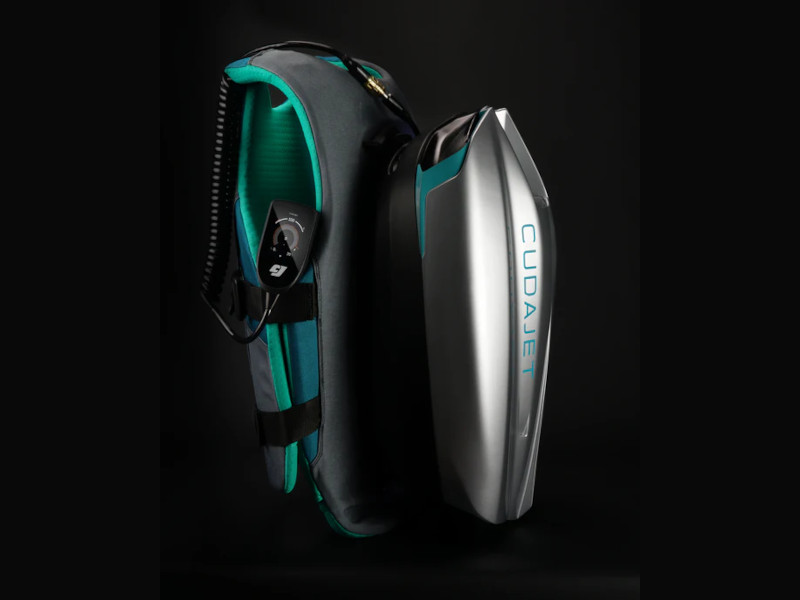
The jetpack has been tested at depths of up to 131 feet; however, out of safety, the CudaJet has a 3-meter (10-foot) limit to prevent inexperienced users from going too deep, too quickly.
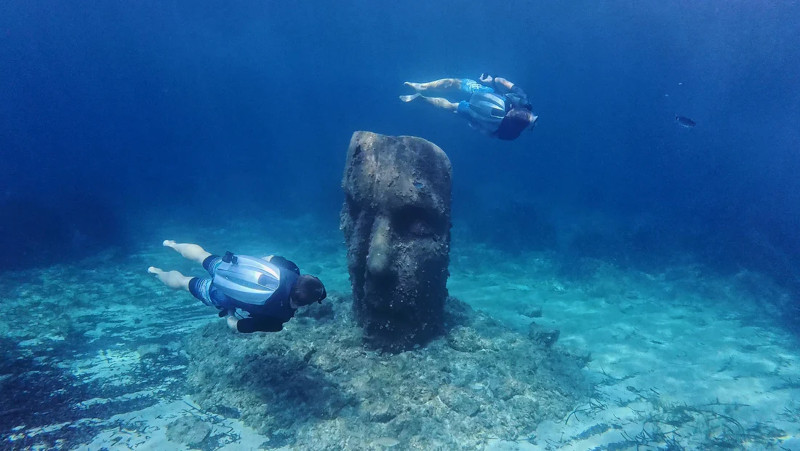
Pitched as the “ultimate super yacht toy,” the basic version has a price tag of £22,500 ($30,620).
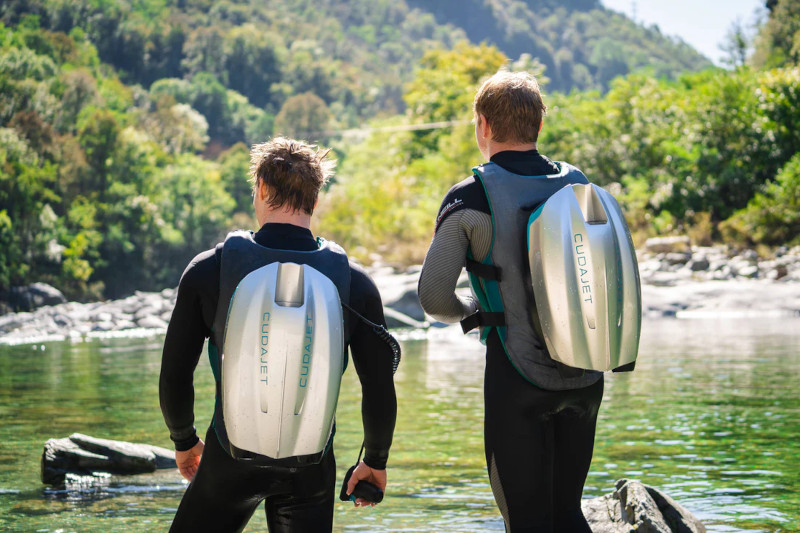
All images via CudaJet.
Sources: CudaJet; Safety Page at CudaJet's website; The science of holding your breath: How could Kate Winslet stay underwater for over 7 minutes in Avatar 2?
Related Articles:
Designer Invents Flying “Superbike” and Takes It for a Ride in the Sky
Untethered Astronaut Spacewalks Are Some of the Most Unnerving Space Footage Out There
Incredible NASA Imaging Shows the Most Traveled “Underwater Highways” on Earth
Underwater “Lost City” May Hold the Key To Understanding How Life on Earth Began




















































































